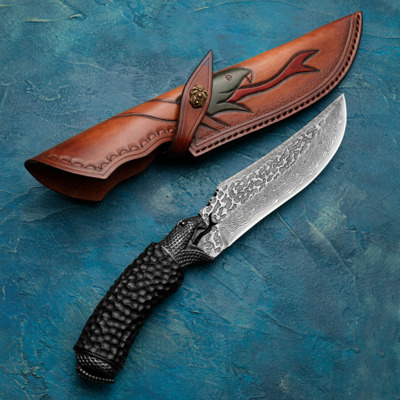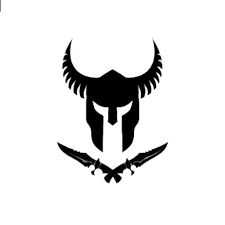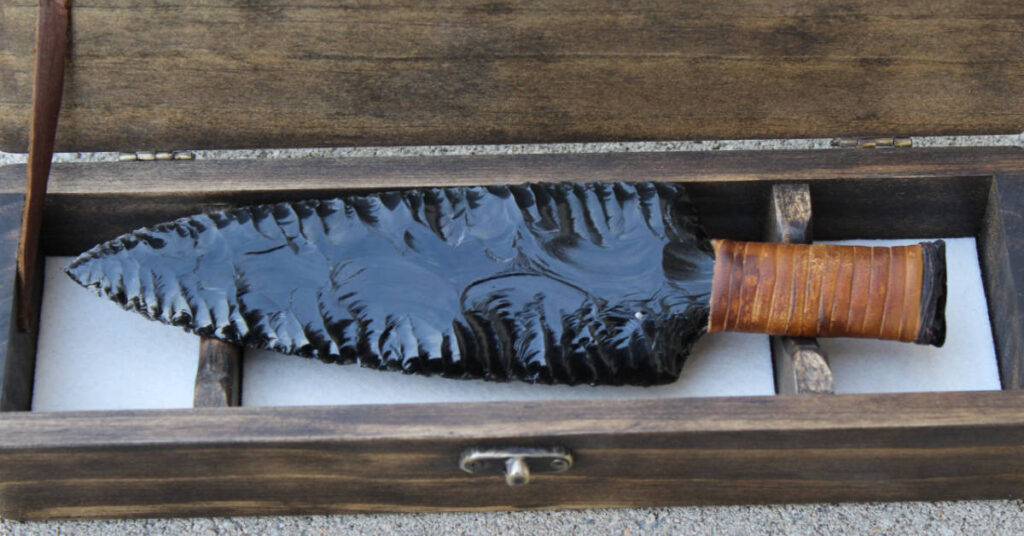Welcome to the Viking Knife! Learn about knife types, their use, and everything you need to know about knives. We’ll provide insights into the sharpest knives in the world, the metals that make the sharpest blades, and how to maintain knife sharpness.
Summary
ToggleIn this article, we will introduce you to the sharpest knives based on your preferences, factors to consider before making a purchase, and how to keep your knives razor-sharp.
Let’s begin!
What Is the Sharpest Knife in the World ?
1 – Swords
Let’s start with swords. Naturally, swords need to be sharp, as they are designed for cutting through opponents effectively. However, a sword shouldn’t be overly sharp, as an incredibly sharp blade hitting a hard resistance like armor or another sword will break quickly. This is why even the most legendary katanas, known for their sharpness, were far from being as sharp as a good kitchen knife. For example, kitchen knives don’t need to withstand as much force as swords and can, therefore, be much sharper.

2 – Razor Blades
Razor blades are even sharper than that. They are typically made of tempered steel and have an extremely fine edge for comfortable shaving, which also explains why you need to change them so often. A sharp blade doesn’t last long. The edge of a razor blade is approximately 500 to 600 nanometers wide, making it several times finer than a human hair.
3 – Scalpels
Scalpels must also be incredibly sharp for precise incisions during surgery. Ordinary steel scalpels are not sharper than knives or razor blades because the limiting factor is the material. At a certain point, steel cannot be sharpened any further, but there is a special lance. It is primarily used for eye surgeries and surpasses all regular steel blades in every conceivable way.

Compact Viking Survival Knife for Wilderness Survival
4 – Diamond Scalpels
Diamond scalpels are even more durable, sharper, and have better wear resistance. With these blades, you can achieve an incredibly smooth cut, which is crucial for scar-free healing processes. The downside, of course, is that diamond blades are very expensive, considering they are made of diamonds. Due to their hardness, they had to be cut with lasers and other diamonds. After all this work, the edge is about two thousand times finer than a human hair, barely 20 nanometers wide.
5 – Obsidian Blade
It may sound unbelievable, but there is a blade sharper than that, and it has been used by humans for millennia—a blade made of obsidian. Obsidian is a volcanic glass formed when lava rapidly cools. The edge of an obsidian knife is only one molecule wide at its finest point, approximately one nanometer wide. However, obsidian is not as easy to work with as steel. These extremely sharp edges can only be achieved by knapping flint.
The Sharpest Knife – “Obsidian Blades”
Discover the world of obsidian blades, the sharpest knives in history. Learn about their origin, uses, and drawbacks. While obsidian is incredibly sharp, it presents challenges in practical applications, making it unsuitable for professional kitchen knives. Explore the qualities of the sharpest knives in your kitchen arsenal and the importance of blade material compatibility with knife sharpeners.
What Is an Obsidian Blade ?
- Obsidian is essentially volcanic glass, formed when magma is pressurized and pushed to the Earth’s surface. Rapid cooling results in obsidian formation. This material has been used since ancient times to make arrows, samurai swords, scalpels, and was once the sharpest knife in the world for the same reasons. However, obsidian blades are not suitable for professional kitchen knives due to their paper-thin width, causing them to crack and break during testing for sharpness and compatibility with knife sharpeners.
- Qualities of the sharpest knife in your kitchen arsenal include hollow edges, an ergonomic handle, a comfortable stainless steel handle that passes the knife test, and sharpness verified through paper or tomato tests. Professional chef knives must also have blades compatible with kitchen sharpeners.
Uses of Obsidian Blades
- Obsidian blades are sharp, heavy, and highly durable, making them an excellent choice for tool creation. Throughout history, obsidian blades have served various purposes. One of their most common uses was in weaponry, especially when they were first discovered. They can be easily crafted into sharp, thin blades used for cutting and piercing enemies during battle.
- Obsidian weapons or volcanic glass blades have been found worldwide, primarily in Europe and Asia. This is not surprising given that it is an easily workable material in both its liquid and solid forms. Today, obsidian knives are used by chefs and are also sought after by collectors.
- Originally believed to be a volcanic stone, obsidian is made from water-soluble glass that forms over time as lava cools. It is used in jewelry and art but is primarily known as a source of cutting tools.
Drawbacks of Obsidian Blades :
- The most significant drawback of obsidian is its potential to cause jagged cuts that require invasive medical care. This is why it is avoided in restaurants by chefs and home cooks. Nowadays, obsidian blades are only used by surgeons when working with scalpels and other advanced medical equipment.
- These knives can cause severe injuries when used with large or round foods that are difficult to cut with serrated or utility knives. However, many blade materials are stronger, more durable, and ten times more efficient and versatile than obsidian. Let’s delve further into this topic.
- Can cause jagged cuts requiring invasive medical care
- Cause injuries when used with large or round foods
- Severe injuries

Serpent Fafnir Damascus Steel Handmade High Hardness Outdoor Survival Knife
What is the Sharpest Metal ?
Whether it’s chef knives, boning knives, utility knives, steak knives, fillet knives, or even high-end Santoku knives, using a knife made from materials such as stainless steel, German steel, Damascus steel, Japanese steel, and high-carbon stainless steel will never disappoint you. Here’s everything you need to know about them.
1- Stainless Steel
Stainless steel is by far the most popular material for knives, and there are many choices within this category, such as German ThyssenKrupp stainless steel, Japanese steel, American steel, and high-carbon stainless steel, each with its own merits. Stainless steel knives are valued for their rust, corrosion, and stain resistance, instantly increasing their durability.
When choosing a sharp knife, there are multiple factors to consider, but knives made of stainless steel that can last for generations make the process that much easier. Stainless steel is also an excellent heat conductor, so you don’t have to worry about oils and other liquids sticking to it. These knives typically feature a wooden handle.
2- German Steel
German steel, commonly known as ThyssenKrupp German stainless steel, is excellent for many reasons, including durability. German steel is famous for its wear resistance, ultra-sharpness, and precision forging.
Not only is it durable, but steel manufacturers produce it using significantly less energy in the manufacturing process, reducing greenhouse gas emissions.
German steel is also more affordable than other materials without compromising on quality, precision, and durability. The raw materials used to produce German steel are of the highest quality, ensuring a sharp-edged knife without a doubt. These knives come with an ergonomic handle made of stainless steel or wood.
3- Damascus Steel
Damascus steel is produced by using sheets of steel and iron, mixing them with charcoal in an oxygen-free environment. This blend helps consistently reduce and preserve the premium cast Damascus steel. The elegant wavy pattern on a knife is formed by mixing Wootz steel and keeping it at a constant temperature.
Damascus steel is known for its robustness, precision, and dexterity. These knives have a wooden handle with rivets to keep the knife body super strong. This is precisely why it is slightly more expensive, but it is still an excellent investment. The blade is so incredibly robust that it promotes and maintains a safe kitchen environment, with few or no accidents – don’t forget to sharpen your knives from time to time.
4- Japanese Steel “High Carbon Steel”
Japanese knives, such as Santoku knives, are the epitome of function and form due to the carbon content of the material. If well-maintained, they can be the sharpest knives in your knife set, with sturdy, resilient, and strong blades.
Japanese knives should be wiped with a paper towel after each use. By oiling the blade, you will also achieve precise cuts, as there is less friction this way. By maintaining them, you will also protect them from rust and corrosion.
Knives made with this material are hardened to 56+ Rockwell and are perfect for amateur chefs looking to expand their skills. This steel contains less chromium, so it can be sharp, but it is also somewhat prone to rust and corrosion. These knives come with an elegant handle for an ergonomic feel.
How to Improve a Knife’s Sharpness ?
- To make a blade sharper, soak the sharpening stone in cold water for at least 10 to 15 minutes.
- Once the sharpening stone is wet, place it flat and tilt the knife to 20 degrees.
- Begin sweeping and sliding the knife, starting from the blade and going towards the tang.
- Repeat the same process on the other side of the knife and stop when the knife has reached the desired degree of sharpness.
- Go all the way to the tip. Make a 20-degree angle and sweep and slide again – more gently this time. Flip and repeat.
- Continue this process for 10 to 15 minutes, and once you have a smooth and sharp blade, you are good to go.
FAQ
The sharpest knife in the world depends on the context. While obsidian blades are known for their razor-sharp edge, they are not practical for everyday kitchen use. For kitchen knives, Japanese high-carbon steel knives are renowned for their sharpness and precision.
To maintain sharp kitchen knives, regularly use a honing rod or sharpening stone. Store knives in a knife block or magnetic strip to prevent dulling. Avoid cutting on hard surfaces like glass or granite and hand wash knives instead of using a dishwasher.
The ideal angle for sharpening a knife is typically around 20 degrees. This angle provides a balance between sharpness and durability. Japanese knives may have a more acute angle, while European knives may have a slightly wider angle.
Honing rods are used for realigning the blade’s edge rather than sharpening. They help maintain an already sharp edge but do not remove metal to create a new edge. For sharpening, a sharpening stone is more suitable.
Conclusion
The pursuit of the ultimate sharp knife represents a constant challenge, blending craftsmanship, technology, and innovative materials. While perfection remains elusive, this perpetual quest fuels innovation, leading to breakthroughs that continually redefine our expectations for sharpness and performance. In this ongoing exploration, the art of the blade evolves, offering ever-sharper tools, pushing the boundaries of precision and efficiency.

